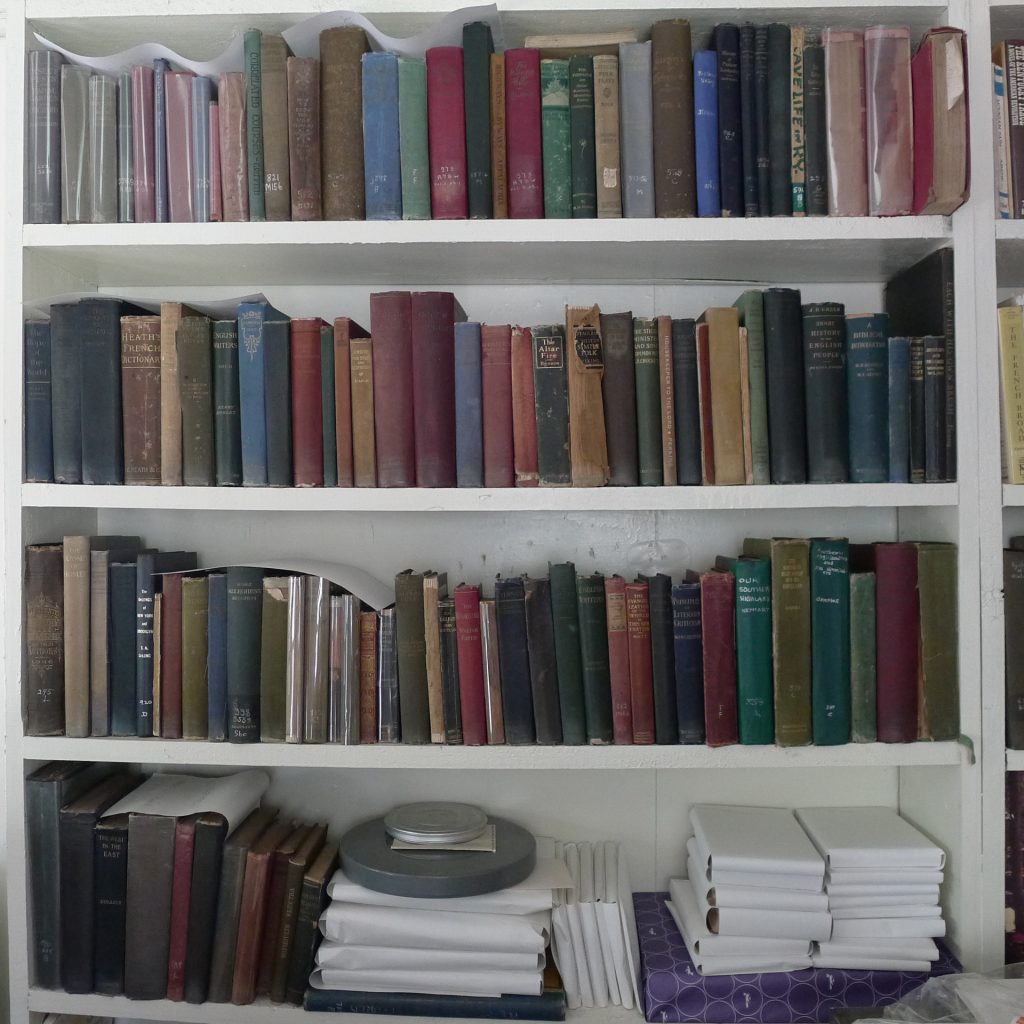Pine Mountain Settlement School
Series 40: BIBLIOGRAPHY
Bibliographies
Introduction

Annex storage room for photographic collections and rare books in the Archive/Library room, 2013. Located in Boys House. [P1140189.jpg]
TAGS: bibliographies, bibliography, bibliographic principles, cataloging and classification, librarians and archivists’ struggle to create standardization, electronically shared access systems, formatting, essentializing, Chicago Style, content management
BIBLIOGRAPHIES
It has never been easy to apply basic bibliographic principles of cataloging and classification to a body of work. A bibliography of bibliographies is even more difficult as a process of arrangement and description. Librarians and archivists have struggled for eons with the challenge of creating a uniform set of categories that would suffice for the limitless number of documents and records. Shared access demands standardization, and standardization is an alien concept and often irrelevant to archival practice.
Electronically shared access systems place new demands on standardization. In general, the bibliographies, like archives, rely not so much on standardization as they do on formatting. This is particularly true with bibliographies. The formats are many and are growing and changing. MLA, Chicago, APA, etc. all carry similar demands but they are their own animal. What they do share is the concept of essentializing — providing the essential qualities of a record in a consistent container.
The “container” for most of the bibliographies in Pine Mountain Settlement School Collections is the Chicago Style, long a favorite of the Humanities. The continuation of this format through disciplines pays homage to the idea of standardization without going into the more extensive analysis of how collections and now digital records groups might be configured for historians and scholars in the future. It simply defines the basic elements of books and periodicals and is aimed at a kind of technical precision. We do not always hit the mark on this technical precision, but we are getting better at it. Further, we do not aim for precision, but simply to follow the notion that folks need to know where their information comes from to trust it. We aim for the general public and not necessarily for the scholar in our content management and in some cases in our choices of content.
Digitization is not without its consequences. Subject files in early libraries were a must, now OPACs (Online Public Access Catalogs) are part of the vast and growing digital network. Our bibliographies point to sources that do not necessarily reside within the Pine Mountain Settlement School Collections but may be found “out there,” on the web. Sometimes these links can change the understanding of the cultural resource, the photograph, and other materials found in the home collections. These links have the capacity to change the institution itself.
Click on BIBLIOGRAPHIES Guide for a list of bibliographies in the Pine Mountain Settlement School Collections. Almost all these bibliographies are under construction and will grow. Also, see the tables in many pages that contain basic bibliographic information for people, buildings, and other key components of the collections.
Return To:
BIBLIOGRAPHIES Guide

